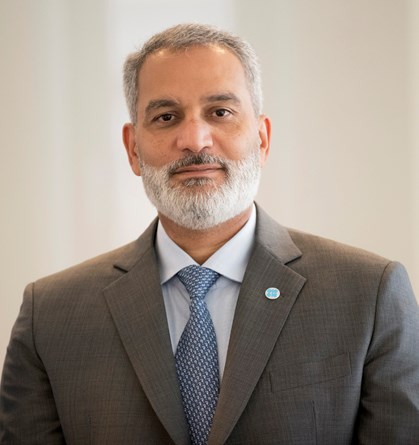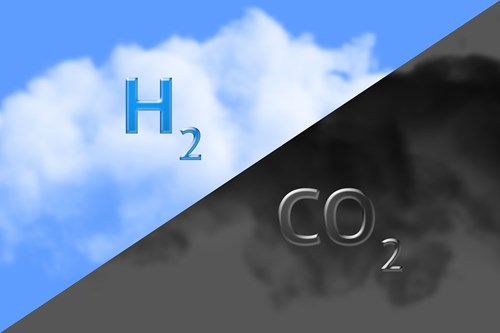Explained: what is energy quadrilemma and why the industry is talking about it
Should animated global conversations around the energy trilemma now give way to energy quadrilemma?
That’s the question swirling around the energy industry even as the pursuit of energy security and the global energy crisis prompts governments, energy investors and companies to recalibrate their strategies in balancing sustainability, affordability and supply security.
What is the energy quadrilemma?
As OPEC Secretary General Haitham Al-Ghais put it succinctly during CERAWeek earlier this month, “Maybe the trilemma should become the quadrilemma and add to it energy reality… The sense of reality and realism and practicality when we talk about energy transition is what I would add to that energy trilemma.”
Energy quadrilemma, by definition, adds the social dimension of energy reality to the delicately managed troika of secure, equitable and environmentally sustainable energy. Focusing more on people and their involvement in the energy industry, this fourth issue therefore concerns itself with providing energy in a just and sustainable manner.

What is the context to global conversations around the quadrilemma?
While the disruption to global energy markets has been a stark reminder to global policymakers of the urgent need to reduce the dependency on a single fuel source, drastically replacing all hydrocarbons with renewables is neither realistic nor possible with current technology – and that’s a position that has been repeatedly underscored by stakeholders across the spectrum of the industry.
According to Al Ghais, the world needs to accept that all forms of energy are necessary to meet the demands of a global population expected to reach almost 10 billion by 2050 – implying that the focus of the energy transition should be on curbing emissions rather than specific forms of energy. A key part of the argument is that intense discussions around the energy trilemma often overlook the social reality of specific energy forms such as hydrocarbons, and therefore the quadrilemma can be a more pragmatic framework for resolving the main challenges faced by global energy systems.
Why is it being talked about now?
Apart from the recent reference by the OPEC Secretary General, energy leaders have been increasingly citing the quadrilemma in their speeches and conversations.
Speaking at the inauguration of India Energy Week in Bengaluru in February, Hardeep Singh Puri, Minister of Petroleum and Natural Gas, and Housing and Urban Affairs, Government of India, was emphatic that the discussions and exchange of ideas at the event would devise feasible solutions for the global energy quadrilemma and answer some of the industry’s most pressing questions.
The increasing references to the energy quadrilemma can be framed against the rapidly changing geopolitical landscape that has transformed the industry’s approach to the global energy outlook, abetted by a bearish outlook for the global economy.

What is the energy trilemma all about then?
The term “energy trilemma” was coined by the World Energy Council, and their World Energy Trilemma Index has been prepared annually since 2010. Centred around the pillars of affordability, security of energy supply, and the environment, there are several variations to the exact terminologies used as a part of the trilemma.
But in the words of Dr Tedd Moya Mose, Oxford Martin Fellow at Oxford University’s Martin Programme on Integrating Renewable Energy, the energy trilemma is important “because it states both the problem and provides a framework to deliver the energy transformation needed to make sustainable energy systems a reality”.
It does so by ensuring that energy decisions consider these competing interests and are not guided only by financial considerations or the need for energy self-reliance.
What is the way forward for the energy industry?
Maintaining this delicate balance – even considering the quadrilemma – in the context of rapid transition to decentralised, decarbonised and digital energy systems is the biggest challenge for the global energy industry as it navigates the road to net zero.
The Baker Hughes Energy Transition Pulse 2023 that examined the influence of the energy trilemma on the energy transition, for instance, found that the energy crisis, and the resulting high demand for natural gas from countries other than Russia, is making natural gas and LNG an investment priority for energy and industrial companies. In the annual survey of 555 business leaders across 21 countries, 57 per cent said they were planning to make new investments in natural gas or have already done so, while a further 65 per cent said energy price volatility had expedited their final investment decision.
Whether it’s tackling the trilemma or the quadrilemma, the current scenario is also certain to put added pressure on energy-intensive and hard-to-abate industries such as cement, steel, mining and heavy industrial manufacturing. Hydrocarbon businesses meanwhile will have to find a way to balance supplying renewed demand while developing low-carbon technologies to proactively reduce greenhouse gas emissions.
Experts and stakeholders across the industry value chain therefore need to work together to ensure sustainable outcomes in the relationship between energy, society and climate.
KEEPING THE ENERGY INDUSTRY CONNECTED
Subscribe to our newsletter and get the best of Energy Connects directly to your inbox each week.
By subscribing, you agree to the processing of your personal data by dmg events as described in the Privacy Policy.
















